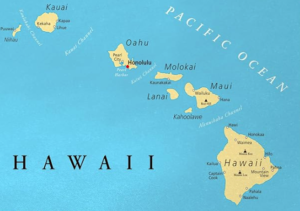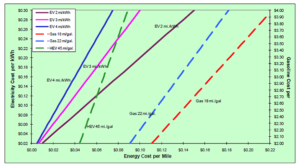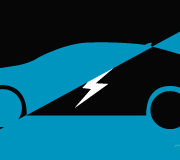Hawaii’s EV Transition; ICE versus EVs – Part Two
Why going all-electric in Hawaii makes sense for many of the state’s residents
 There are many wonderful and unique things about living in Hawaii, but personal transportation and vehicle ownership does not generally come to mind as one of them.
There are many wonderful and unique things about living in Hawaii, but personal transportation and vehicle ownership does not generally come to mind as one of them.
Island living means just that, no matter how far you travel you will eventually find yourself back where you started due to geographic constraints. These constraints are most favorable to vehicle ownership in terms of limited miles traveled in the life of a vehicle’s ownership. This is even more true for those residents of the state driving all-electric today or those considering doing the same in the near future.
Early EV adopters in Hawaii mostly rely on home charging options, a trend represented by most EV owners today, nationally. Hawaii and its resident islands, however, offer EV owners less concerns about so-called range anxiety with most EV models today offering a driving range of 200-300 miles between charges, with the average Hawaii driver traveling 40-50 miles per day. It is also an established fact and government goal to advance a low cost and reliable public charging network across North America and in Hawaii and Alaska in funded infrastructure development now underway.
Home charging represents, possibly, the least EV ownership charging option, and certainly the most convenient and efficient means of EV charging (fueling) for electric vehicle owners. Low cost L2 home chargers are defined as medium speed charging, offering between 30-50 miles per hour added vehicle battery range for each hour of charging, and requiring little more than electrical dryer outlet in a garage or carport to plug into and achieve a full overnight vehicle charge.
For EV owners, the ease, convenience and reliability of home charging is a time investment well worth making, and easy as plugging-in one’s phone for an overnight charge.
Although EV ownership with home charging in Hawaii (today) is not for everyone, it does offers the ultimate benefits to Hawaii residents of convenience, and significant cost savings when home charging is coupled to rooftop solar (best with home power storage). The marriage of SUN, Solar, and EV ownership, which altogether represent the most efficient and climate-friendly example of vehicle charging directly from the Sun, while by-passing the high utility service costs, and dirty power sources employed by the state’s largest utility.
But for the broader marketplace many future EV drivers, perhaps especially true for Hawaii, will wait for a more mature public infrastructure and charging network with outlets and stations that continue to evolve into national fueling network system equal to and eventually superior to that of world’s century-old network of national and international gas station stops. And while they wait they will pay more their personal transportation and the price uncertainties associated with volatile and uncertain global fossil fuel markets.
EV Ownership in Hawaii; Questions and Answers
Every vehicle on the road today has what is referred to as a “powertrain”, the system which powers the vehicle from point A-to-B.
It is a fact that all-electric vehicles have only about 15% of the components of a traditional ICE gas or diesel fueled vehicle. Less parts = less ownership cost, and greater reliability and energy-to-performance vehicle capabilities.
Most ICE propulsion system components have been replace and single drive battery which controls electric motor(s) on the front or back or both sets of wheels. Going all-electric also offers benefits of design simplicity, with fewer components to maintain, fail and replace within the vehicle’s life. It is that which differentiates EVs from ICE vehicles in terms of lifetime ownership costs, efficiency, and performance.
The following ownership cost / time factors comparison reveal the stark differences between ICE and EV ownership factors for Hawaii’s drivers
ICE VEHICLE OWNERSHIP — ESTIMATED FUELING TIME & COST EXPENDED ANNUALLY:
- AVERAGE TIME ICE OWNERS SPEND ENGAGED ANNUALLY REFUELING A GAS / DIESEL POWERED VEHICLE
- 9 1/4 hours of lost time per year dedicated to re-refueling
- AVERAGE COST ICE OWNERS SPEND ANNUALLY REFUELING A GAS / DIESEL POWERED VEHICLE
- $2,650 annual re-refueling cost
EV (HOME CHARGING; UTILITY SOURCED ELECTRICITY) — ESTIMATED CHARGING TIME & COST EXPENDED ANNUALLY:
- AVERAGE TIME EV OWNERS SPEND ENGAGED ANNUALLY CHARGING AT HOME
- 3 1/3 hours of time per year dedicated to home charging set-up /disengagement
- AVERAGE COST EV OWNER ENERGY COST FOR ANNUAL CHARGING
- $ 0 annual recharging cost (home charging with rooftop solar)
- $250 annual recharging cost (home charging with utility)
 The Idaho National Laboratory and other studies have determined today’s electric vehicles have an energy efficiency range of 3-to-4 miles range per each kWh consumed which translates into about 3.3 cents per mile travelled when electricity costs 10 cents per kWh. For Hawaii, HE utility Electric rates range from a low of 36 cents to 53 cents per KWh. The statewide average for all HE rate groups nears $0.50 per KWh, and when applied to the annual cost for home EV charging from utility-supplied power is still a bargain compared to gas-diesel powered vehicle fuel costs.
The Idaho National Laboratory and other studies have determined today’s electric vehicles have an energy efficiency range of 3-to-4 miles range per each kWh consumed which translates into about 3.3 cents per mile travelled when electricity costs 10 cents per kWh. For Hawaii, HE utility Electric rates range from a low of 36 cents to 53 cents per KWh. The statewide average for all HE rate groups nears $0.50 per KWh, and when applied to the annual cost for home EV charging from utility-supplied power is still a bargain compared to gas-diesel powered vehicle fuel costs.
Vehicle Maintenance
Dealership visits, vehicle maintenance, and other ownership-invested costs represent stark frequency and cost differences between (ICE) gas-powered vehicle vs. an electric vehicle (EV) ownership experiences.
The question of after-sale dealership support has many facets, but one common area all vehicle owners face are generally some level of maintenance responsibilities and out-of-pocket costs. For (EV) electric vehicle owners a very small percentage of the parts are shared with an ICE vehicle, tires being the primary example. EVs require little maintenance or parts replacement in comparison to the added time and money invested by their ICE owner counterparts.
Referring to ICE (Internal Combustion Engine) vehicles as obsolete may sound harsh to some, but that is today’s personal transportation reality.
Notation:
Large SUVs and pickups consume considerably more fuel than do subcompact cars; and owner driving habits vary widely. BeyondKona has researched local and national sources in developing the aforementioned time and cost vehicle ownership averages; and data which is provided for readers reference and guidance purposes only, and which are cited within this article series include the following research assumptions:
- ICE milage average of 23 MPG is assumed as a combined fuel economy for all Hawaii’s personal vehicle classes (non-commercial):
- Average 28 MPG combined fuel economy – Sedans (50% market share assumption)
- Average 18 MPG combined fuel economy – SUV / Light Trucks (50% market share assumption)
- Most vehicles’ average fuel tank capacity is between 10.5 and 18.5 gallons or a combined all personal vehicle classes fuel tank size of 14.5 gallons
- Most EV’s today average battery size is 72 KWh and with active charging range of 50KWh or more. (miles driven per KWh are subject to different EV models, drivers, and driving conditions, some factors governing MPG with ICE vehicles)
The national average cost for electricity in the U.S. is about 10 cents per kWh, while the average residential rate is about 11.7 cents per kWh, while Hawaii’s largest utility, Hawaii’s consumer electricity rates are 4 to 5 times than the national average, and as such, have been factored into the article’s localized vehicle operating assumptions:
- other comparative cost & time ownership factors:
- Average of 40 miles per day traveled / Average Vehicle (all) Model Year 2021
- Average miles driven annually:12,480 miles / 543 gallons of fuel purchased and consumed annually
- Average miles driven annually:12,480 miles / KWh of electricity consumed annually
- The average cost of regular gasoline in Hawaii in May 2023: Kauai, $5.239; Wailuku, $4.840; Hilo, $4.773; and Oahu, $4.667; combined per gallon 2023 sample = $4.88 / $2,650 yearly average in ICE fuel costs
- Average time spent for gas station ICE refueling: 15 minutes per stop
- Average ICE annual re-Fueling stops 37 stops
- Average time spent for EV home charging is little more than coupling and decoupling: 2 minutes per charge
- Average EV home (full) overnight charging cycles annually = 100 per year
- Average 6 days per week traveled, 312 vehicle travel days per year




Leave a Reply
Join the Community discussion now - your email address will not be published, remains secure and confidential. Mahalo.